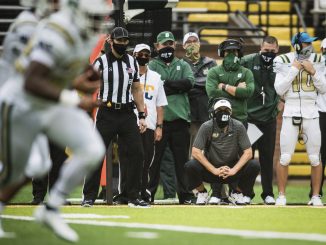
BRISTOL, VA — On a field trip to the Birthplace of Country Music Museum, Ashish Bibireddy put on headphones and scrolled through a jukebox of music from an influential 1927 recording session.
Bibireddy and nine other medical students had already been biking and rafting on their visit to rural Appalachia organized by a nearby medical college. But it wasn’t just casual sightseeing; the tour was part of a concerted effort to attract a new generation of doctors to rural areas struggling with health care shortages.
The Quillen College of Medicine at East Tennessee State University is among a small group of medical schools across the U.S. with programs dedicated to bolstering the number of primary care doctors in rural communities.
The schools send students to live in small towns and train with rural doctors. Like Quillen, some also organize outings and cultural experiences to try to sell students on living there after they graduate.
“It’s a little sense of what the fun part of rural life can be,” said Dr. Dana King, chair of the family medicine department at West Virginia University School of Medicine, where students in the rural track go to a ski resort, visit a coal mine and go whitewater rafting.
Most of the more than 7,000 facilities, population groups and areas in the U.S. facing a shortage of primary care physicians — often a patient’s first point of contact for treatment — are rural, according to the U.S. Department of Health and Human Services. They need nearly 4,000 additional physicians to close the gap.
To address this need, the House in the North Carolina General Assembly recently passed a bill to authorize $20 million to fund the Rural Hospital Stabilization Act’s loan program to help rural hospitals modernize and stay in business. The bill is awaiting Senate approval.
Jason Soong, another medical student in the program, said he has “always known” that he wanted to live in a sparsely populated place with open space. Soong, 23, grew up in a Philadelphia suburb and attended California Northstate University College of Medicine outside Sacramento.
“Living out in a rural area, you can just go outside your door, and you have nature right there,” Soong said.
Administrators of rural track medical school programs say their graduates go into rural practice at considerably higher rates than other doctors. But many of those students are already inclined to practice in a rural area, so the figures may exaggerate the programs’ success, said Dr. Randall Longenecker, associate project director for the Collaborative for Rural Primary care, Research, Education and Practice.
For students from small towns, the programs can help maintain their enthusiasm for rural life, said Dr. Joseph Florence, director of rural programs at Quillen.
Dr. Darrin Nichols, 28, said the rural track program at West Virginia University School of Medicine confirmed his choice to practice near the West Virginia town of roughly 800 people where he grew up. He was struck by the camaraderie of coal miners he met during a trip organized by the school and said it reminded him of his own tight family bonds.
“I always wanted to stay near my family and practice in a community that had those types of relationships,” he said.


